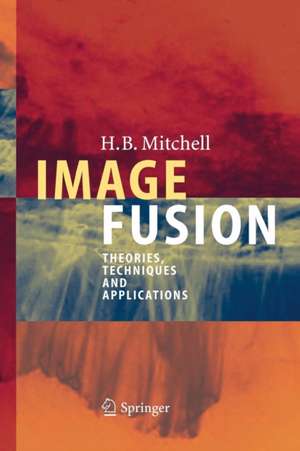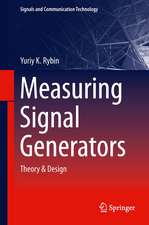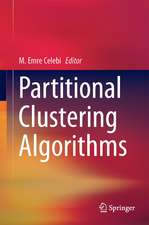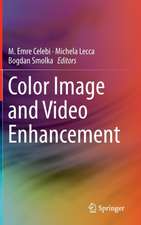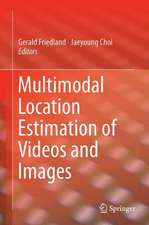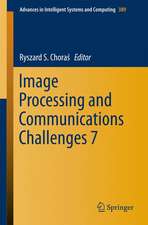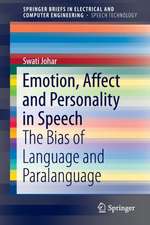Image Fusion: Theories, Techniques and Applications
Autor H.B. Mitchellen Limba Engleză Paperback – 29 noi 2014
| Toate formatele și edițiile | Preț | Express |
|---|---|---|
| Paperback (1) | 557.75 lei 38-45 zile | |
| Springer Berlin, Heidelberg – 29 noi 2014 | 557.75 lei 38-45 zile | |
| Hardback (1) | 643.34 lei 6-8 săpt. | |
| Springer Berlin, Heidelberg – 26 feb 2010 | 643.34 lei 6-8 săpt. |
Preț: 557.75 lei
Preț vechi: 697.19 lei
-20% Nou
Puncte Express: 837
Preț estimativ în valută:
106.72€ • 111.43$ • 88.33£
106.72€ • 111.43$ • 88.33£
Carte tipărită la comandă
Livrare economică 31 martie-07 aprilie
Preluare comenzi: 021 569.72.76
Specificații
ISBN-13: 9783642425035
ISBN-10: 3642425038
Pagini: 264
Ilustrații: XVI, 247 p.
Dimensiuni: 155 x 235 x 14 mm
Greutate: 0.37 kg
Ediția:2010
Editura: Springer Berlin, Heidelberg
Colecția Springer
Locul publicării:Berlin, Heidelberg, Germany
ISBN-10: 3642425038
Pagini: 264
Ilustrații: XVI, 247 p.
Dimensiuni: 155 x 235 x 14 mm
Greutate: 0.37 kg
Ediția:2010
Editura: Springer Berlin, Heidelberg
Colecția Springer
Locul publicării:Berlin, Heidelberg, Germany
Public țintă
ResearchCuprins
Image Sensors.- I: Theories.- Common Representational Format.- Spatial Alignment.- Semantic Equivalence.- Radiometric Calibration.- Pixel Fusion.- II: Techniques.- Multi-resolution Analysis.- Image Sub-space Techniques.- Ensemble Learning.- Re-sampling Methods.- Image Thresholding.- Image Key Points.- Image Similarity Measures.- Vignetting, White Balancing and Automatic Gain Control Effects.- Color Image Spaces.- Markov Random Fields.- Image Quality.- III: Applications.- Pan-sharpening.- Ensemble Color Image Segmentation.- STAPLE: Simultaneous Truth and Performance Level Estimation.- Biometric Technologies.
Textul de pe ultima copertă
This textbook provides a comprehensive introduction to the theories, techniques and applications of image fusion. It is aimed at advanced undergraduate and first-year graduate students in electrical engineering and computer science. It should also be useful to practicing engineers who wish to learn the concepts of image fusion and use them in real-life applications.
The book is intended to be self-contained. No previous knowledge of image fusion is assumed, although some familiarity with elementary image processing and the basic tools of linear algebra is recommended. The book may also be used as a supplementary text for a course on advanced image processing.
Apart from two preliminary chapters, the book is divided into three parts. Part I deals with the conceptual theories and ideas which underlie image fusion. Particular emphasis is given to the concept of a common representational framework and includes detailed discussions on the techniques of image registration, radiometric calibration and semantic equivalence. Part II deals with a wide range of techniques and algorithms which are in common use in image fusion. Among the topics considered are: sub-space transformations, multi-resolution analysis, wavelets, ensemble learning, bagging, boosting, color spaces, image thresholding, Markov random fields, image similarity measures and the expectation-maximization algorithm. Together Parts I and II form an integrated and comprehensive overview of image fusion. Part III deals with applications. In it several real-life examples of image fusion are examined in detail, including panchromatic sharpening, ensemble color image segmentation and the Simultaneous Truth and Performance algorithm of Warfield et al.
The book is accompanied by a webpage from which supplementary material may be obtained. This includes support for course instructors and links to relevant matlab code.
The book is intended to be self-contained. No previous knowledge of image fusion is assumed, although some familiarity with elementary image processing and the basic tools of linear algebra is recommended. The book may also be used as a supplementary text for a course on advanced image processing.
Apart from two preliminary chapters, the book is divided into three parts. Part I deals with the conceptual theories and ideas which underlie image fusion. Particular emphasis is given to the concept of a common representational framework and includes detailed discussions on the techniques of image registration, radiometric calibration and semantic equivalence. Part II deals with a wide range of techniques and algorithms which are in common use in image fusion. Among the topics considered are: sub-space transformations, multi-resolution analysis, wavelets, ensemble learning, bagging, boosting, color spaces, image thresholding, Markov random fields, image similarity measures and the expectation-maximization algorithm. Together Parts I and II form an integrated and comprehensive overview of image fusion. Part III deals with applications. In it several real-life examples of image fusion are examined in detail, including panchromatic sharpening, ensemble color image segmentation and the Simultaneous Truth and Performance algorithm of Warfield et al.
The book is accompanied by a webpage from which supplementary material may be obtained. This includes support for course instructors and links to relevant matlab code.
Caracteristici
Self-contained, easy accessible introduction to the hot area of image fusion Presents the most important topics in image fusion at a reasonable size Well-organized modern approach to theories and techniques, includes numerous case studies that illustrate the application of techniques for image fusion to real problems, providing hands-on knowledge Contains details of MATLAB software programs which are available for all the image fusion techniques used in the book Includes extensive modern bibliography
